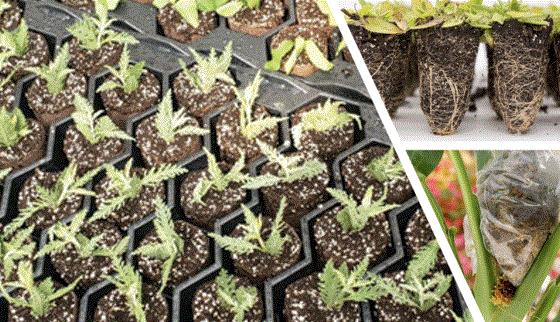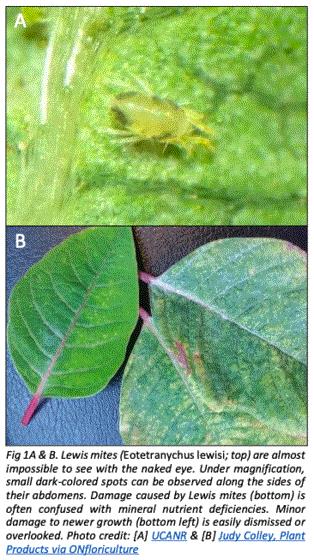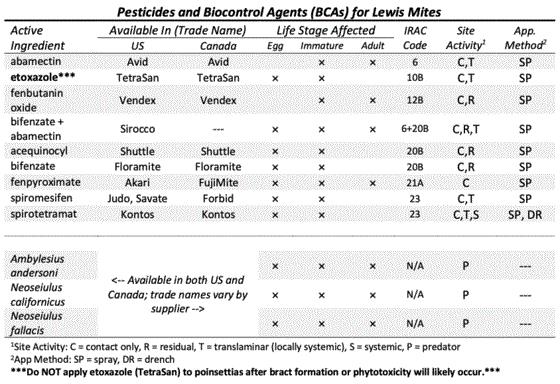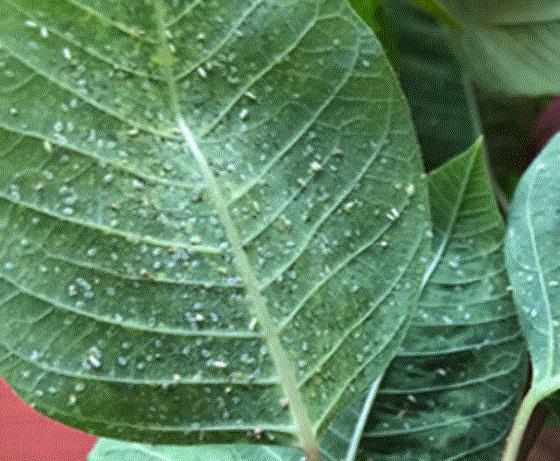Preparing for Propagation—Perennials, Tropicals
I’ve been thinking a lot about propagation this week—planning a series of videos and podcasts covering specific key crops with the Tech On Demand team, getting ready to record videos with technical experts from Syngenta, making a packing list for the AmericanHort Plug & Cutting Conference next week, and chatting with coworkers at Ball Seed about the upcoming season. Although there’s plenty of work left to do before spring plants start landing on your loading docks, I want to begin sharing content to help you and your team get ready.

Over the next few weeks, I’ll kick off the newsletter with video and podcast content related to propagation. Whether you’re starting from seed, plugs, URCs, liners, TC, bareroot, air layers, canes, corms or stumps, it’s always a good plan to refresh on the basics and learn new techniques. We all know the first stages of prop can make or break a crop!
Let’s start with perennials and foliage plants this week:
FIRST-YEAR FLOWERING PERENNIALS: VEGETATIVE PROPAGATION
Getting off to a strong start with vegetative propagation from cuttings or liners is critical for the overall success of your perennial crops. This video takes a step-by-step approach explaining how to correctly use propagation guides that turn years of research into actionable tools. Presenter Chris Fifo puts this information into real-world context by sharing lessons learned in his own production career, as well as from working with hundreds of perennials growers around the country to produce top-quality crops.
PERENNIAL PROPAGATION FROM VERNALIZED LINERS
Perhaps the quickest, easiest and most predictable way to bring first-year-flowering perennials to market is by starting with mature pre-vernalized liners. These plants have been cold treated by your supplier, creating more flower power right out of the gate. But remember, as soon as you receive these liners, the clock is ticking.
PERFECTING PERENNIAL PROPAGATION (GrowerTalks 2020)
For a concise and comprehensive look at starting perennial crops, check out this article by Chris Fifo. He discusses receiving URCs, how to select propagation media, tips for sticking cuttings, and mist program protocols.
TROPICAL & FOLIAGE PLANTS STARTER MATERIAL
Andrew Britten is the technical sales manager for tropicals and foliage at Ball Seed. In this video, he walks us through different types of starter material from which you’ll begin your crops, and shares tips and tricks for success with each.

Nick’s Tip of the Week: Managing Lewis Mites
Each week, I’ll work with my buddy Nick Flax, a technical services expert at Ball, to share a concern that’s come up during one of his numerous calls with growers across North America. This week, he’s talking about a greenhouse pest that’s been spotted on poinsettia crops lately: Lewis mites.
PROBLEM: Lewis mites (Eotetranychus lewisi) might not be considered a major pest of floriculture crops, but they appear in North American greenhouses periodically—often on poinsettias. Infestations early in the crop cycle can be managed with minimal impact to crop quality, but unmanaged populations can create significant challenges for you as crops approach finish.
NICK’S TIP: Scout your poinsettias thoroughly and ramp up control measures ASAP if signs of Lewis mites appear. I’ll share some identification tips, management protocols and control strategies in case you spot these pests this year or in the future.

Identification
Lewis mites are about 0.3 mm in length at mature size and range from green to yellowish in color as immatures, but develop to a light orangish color as they mature.
-
Unlike two-spotted spider mites (TSSM; Tetranychus urticae), Lewis mites lack the (proportionally) large, dark-colored spots on their abdomens or other eye-catching identification traits.
-
Due to their size, magnification is necessary to scout for Lewis mites effectively. Use at least a 20x magnification hand lens when scouting suspicious plants.
-
Lewis mites tend to congregate along leaf veins or edges as populations grow. Eggs are laid on the undersides of leaves and start off clear in color but develop to a milky white color before they hatch.
-
Stippling damage caused by Lewis mites is often faint in the early stages of an outbreak and mimics mild chlorosis in poinsettias. NOTE: Since feeding is frequently concentrated along veins as populations grow, many growers mistake these symptoms for mineral nutrient deficiency symptoms.
Life Cycle
Lewis mites have one larval and two nymphal stages before they mature into adults. They can complete their life cycle in about 14 days at an average daily temperature of 77F (25C). In contrast, TSSM can complete their life cycle in as few as few as 3 days under optimal temps. Adult Lewis mites lay as many as 90 eggs per month, although much slower than TSSM, which can lay about 100 eggs in 10 days.
The comparatively slow life cycle of Lewis mites contributes to why populations often go undetected until crops are mature. Once populations reach a critical mass, webbing is visible and damage is severe; affected plants may be unsalable.
Management Strategies
Due to the sporadic incidences of Lewis mite outbreaks, it’s not typical for growers to implement dedicated preventative measures for them. Those of you who utilize conventional insecticide-based IPM strategies should lean on early scouting and detection efforts to prevent major damage or losses. Implement an appropriate miticide spray rotation ASAP when a Lewis mite infestation is confirmed.
If your IPM strategy focuses on the use of biological control agents (BCAs) and conventional miticide sprays are necessary to curb an outbreak, consult your BCA supplier(s) to develop measures that knock down Lewis mite pressure effectively while minimizing negative impacts to BCAs that manage other target pests in your operation.

Control Measures
Before you apply anything to control Lewis mites, always read the label and follow all instructions regarding the number of times a given active ingredient may be applied to a single crop. Also be sure to:
-
Use controls that target multiple life stages.
-
Rotate IRAC groups between every miticide application.
-
Use a combination of systemic, translaminar and contact miticides to ensure full coverage.

Watch Out for Whiteflies!
It’s been pretty hot lately, at least here in Cleveland, but cooler temps are on the way. When consistently cooler weather hits during poinsettia season, you often see a sudden uptick in greenhouse pests that are seeking shelter and warmer conditions than Mother Nature has to offer. The Tech On Demand team is anticipating hearing from growers experiencing mass migrations of pests in the coming weeks—in particular, high increases in whitefly numbers.

Whiteflies are one of the biggest insect challenges that poinsettia growers face. Though early pressure can occur, these sleepers often strike hardest mid-crop or later in production. In cool weather, it takes a little longer for their population growth to explode than some other pests, but once they have a foothold and numbers are high on your sticky cards, they are a force to be reckoned with. Managing a massive whitefly outbreak is an uphill battle, to be sure, so what are some things that you can do to manage them if numbers are increasing in your greenhouse?
First, make sure you know what kind of whiteflies you’ve got. Silverleaf whitefly (Bemesia tabaci; a.k.a. sweet potato whitefly) and greenhouse whitefly (Trialeurodes vaporariorum) are the main pests of concern on poinsettias. Bandedwing whiteflies (Trialeurodes abutilonea) can often be found alongside the others on a sticky card, but they are more or less just passing through. As such, many growers often exclude bandedwing from their bug counts. Check out this UCANR article for some nice details on the different species of whitefly.
Once you have a handle on the species you're fighting, keep the following in-mind:
-
Preventing population buildup is the best strategy. Fall can be a chaotic time, but do not let your pest scouting program fall off the weekly to-do list. If this is a major pest for you each year, set a lower threshold for weekly bug counts and start deploying controls earlier to keep ahead of the pressure.
-
Applying a systemic insecticide drench 7 to 10 days after planting liners will set you up for success; products containing thiamethoxam and dinotefuran can provide excellent long-term whitefly control. Though many consumers are leery of neonicotinoid chemistries, applying these as a substrate drench to non-native plants like poinsettias in a greenhouse this time of year poses minimal risk to pollinators.
-
Mainspring is a powerful systemic, non-neonic chemistry that many growers use with great success to control whitefly. Ventigra is a great tool for quick knockdown if populations start to get out of hand.
-
Silverleaf whitefly has two biotypes (Q- and B-biotype; genetic differences that cannot be determined visually). Q-biotype whiteflies are resistant to various insecticides. If nothing you spray seems to lower your whitefly populations, sending whitefly samples to a lab for testing may help you narrow in on the problem and develop a better IPM strategy.
Biological control strategies can be very effective at managing whiteflies, especially if your traditional pesticide chemistries just aren’t working very well anymore. Deploying the parasitoids Encarsia formosa and Eretmocerus eremicus or predatory mites like Amblyseius (Typhlodromips) swirskii can do wonders to keep whitefly populations low. Remember, biological IPM is a different system entirely that focuses on prevention, not reaction. Biologicals must be introduced early and continually re-released for best effect.

Industry Salaries & Benefits Survey
GrowerTalks and Green Profit have conducted our industry’s salary and benefits survey for nearly three decades. Now, for the second year, we are once again partnering with AmericanHort to help make the survey even more useful and impactful. AmericanHort has brought in professional research firm Industry Insights to help add value and deliver the survey data.

Taking the survey (hint, hint) and then reading its results in the December issue of GrowerTalks and January issue of Green Profit (click the links to read last year’s results) will not only help build the survey’s relevance but also give you data to benchmark how your business compares to others. The survey includes company demographics, staffing and benefits and salary data on dozens of different job titles across full-time, part-time and seasonal employees.
Survey participants are also eligible to win a Yeti 45 cooler! Cool!
CLICK HERE to fill out the survey (which is confidentially collected and maintained by Industry Insights’ professional data team and securely stored). The survey may be offered in conjunction with AmericanHort but you do not need to be a member to benefit from it. All survey respondents will get the full report prepared by Industry Insights. However, AmericanHort Premium member respondents will receive the Comparison Report at no cost.

Greenhouse & Nursery Courses from UF
University of Florida has been a leader in horticultural education for generations, and as technology allowed for online education, they were an early adopter and have continued to offer some of the best digital courses year after year. If you have team members who could benefit from continuing education, take a look at the course offerings from UF.

SUCCESS WITH YOUR LATINO WORKFORCE: New for 2024 is a course covering concepts of communications and culture,and how they apply to your Latino workforce. Create positive and efficient work environments by preparing non-Latino supervisors and coworkers of Latino employees to solve any issues that might be a result of a mixed-culture workforce. Dr. Claudio Pasian teaches this class and will also include plenty of common Spanish terms and phrases for greenhouse and nursery production.
WEED MANAGEMENT: This course is taught by Dr. Chris Marble, Associate Professor of Ornamental and Landscape Weed Management in the Environmental Horticulture Department at UF. Dr. Marble focuses on teaching horticulture professionals about the importance of identifying weed species before applying treatments. Growers in the course have described him as an instructor who “is very methodical and easy to learn from” who presents “weed management in an in-depth, clear manner.” This course is part of the Plant Health Professional Certificate, and is offered in English and Spanish.
The courses run from October 14 to November 8 and each course costs $275 per participant, with a 20% discount if you register five or more staff members. All course material is completely online and available at any time of the day, and includes pre-recorded videos, an interactive discussion board with PhD professors and quizzes. Two new modules are activated each week during each course, for a total of eight learning modules. CLICK HERE TO REGISTER.

Young Grower & Retailer Cover Stories
A few months ago, I called out the GrowerTalks and Green Profit Young Grower Award finalists and winners on our social media pages and in this newsletter. It was (as always) an amazing group of young innovators on the production and retail sides of the industry. These smart, enthusiastic young people always gets me psyched about the future of horticulture!

In our September issues, we dedicated both covers to the winners, and we published profiles to spotlight each one. I encourage you to read about Drew Groezinger and McKenzie Lain, both super-creative and wise beyond their year, and both poised to do big things in horticulture.
FINDING JOY AND BRINGING IT TO OTHERS is a perfect title for the article about Drew, owner and founder of Clara Joyce Flowers in Illinois. He is not only an entrepreneur but shares an inspiring story that’s just beginning.
McKenzie grew up in the family business—Watters Garden Center in Arizona— and understood from an early age that their store was much more than just a place to buy plants. In MAKING CONNECTIONS, you’ll learn that she left the business for a while before falling back in love with retail horticulture and returned to help lead Watters into the future.

Finish Line ...
Fall is a crazy time for my family. School starting (freshman, junior, teacher) is chaotic, school sports (cross country, tennis) are demanding for kids and parents alike, it seems like everyone in our families have birthdays to celebrate, the church calendar is packed, nice weather means everyone wants to be outside enjoying nature, etc, etc … It can be nearly impossible to balance it all. I’m sure you get it!
On Sunday, I’m flying to Orlando for the 2024 AmericanHort Plug & Cutting Conference and have the honor of leading one of the bus tours and moderating a panel that perfectly relates to the paragraph above. The panel is one of more than 20 educational sessions at this year’s conference and is titled “Navigating Work-Life Harmony for Greenhouse Professionals.”
While preparing for the discussion, I had the opportunity to meet with my panelists to hear their thoughts on balance. I asked them if it was even possible, knowing that some times of the horticulture production year are absolutely insane. Each mentioned the importance of communication—taking the time to listen to the teams they manage and develop strategies to maximize work-life balance and minimize burnout. They also explained how to identify and “treat” common stressors with the hopes of eliminating them, training to drive autonomy and job satisfaction, and why it’s critical to encourage folks to find a “community” outside of work to help balance things out.
I’m super-excited for the panel discussion and am confident it will be one of the best sessions at the conference. If you’re attending Plug & Cutting this year, be sure to put it on your schedule for Tuesday at 2:15! If not, I will report back in this newsletter next week with a recap.
Talk to you soon!


Please feel free to send your comments, constructive criticism and topic ideas to me at bcalkins@ballhort.com.

Bill Calkins
Editor - Tech On Demand
This email was received by you and 25,749 other fine subscribers!
If you're interested in advertising in Tech On Demand, contact Kim Brown ASAP and she'll hook you up.